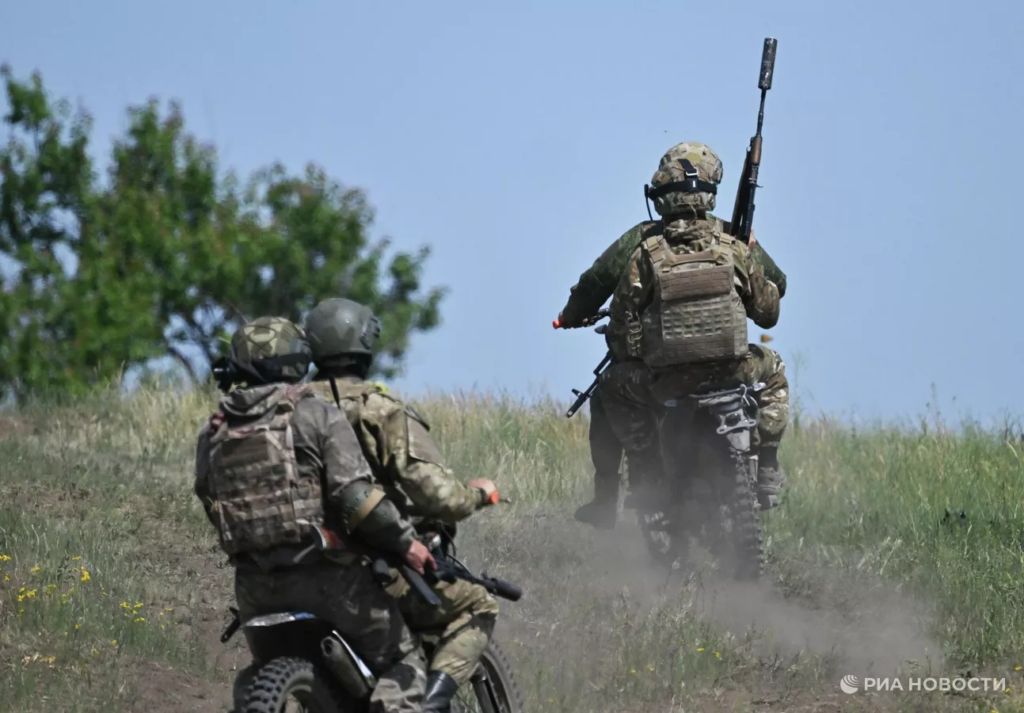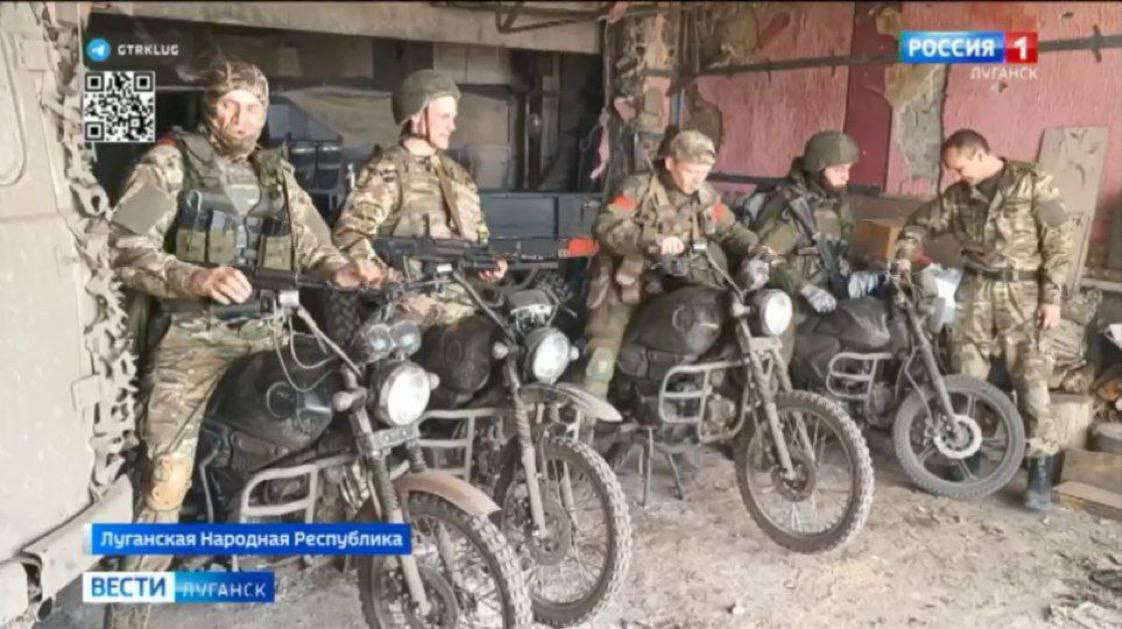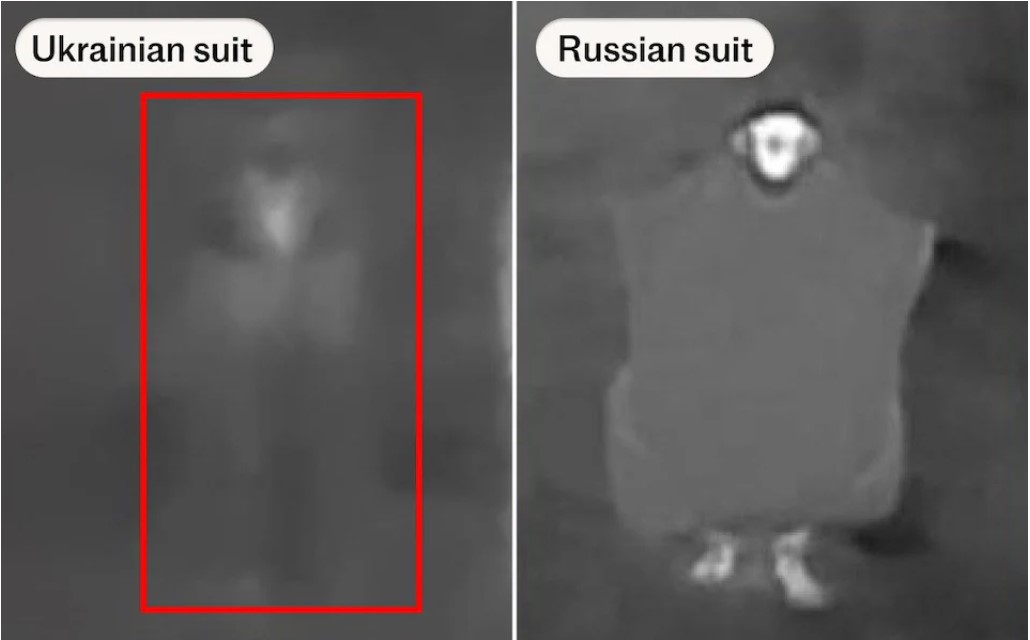When Russia pivoted to motorcycle-based offense, Ukraine began shifting to anti-motorcycle defense. There were delays, but new bike-beating tools are proliferating across the 1,100-km front line of Russia’s wider war on Ukraine.
It’s possible these new tools are already slowing Russia’s summer offensive.
Some Ukrainian drones are dropping traffic spikes—unfolding ribbons with tire-popping metal spikes—in order to block roads ahead of Russian motorcycle assaults.
The traffic spikes work. A video montage posted online by the Ukrainian 82nd Air Assault Brigade recently depicts drones dropping the spikes by night near Pokrovsk—and causing Russian bike troops to crash by day. The brigade apparently sends grenade-dropping bomber drones and explosive first-person-view drones to strike the ejected riders after they crash.

For at least a year now, Ukrainian drone teams including the famed Birds of Magyar have been seeding roads behind the Russian line with pointy chunks of metal called “caltrops” that, like the traffic spikes, can pop tires and stop traffic.
The caltrops, along with the traffic spikes and other simple countermeasures are taking on greater importance now that Russian regiments have largely shifted to infantry and motorcycle assaults.
Having written off more than 20,000 tanks, fighting vehicles and other heavy equipment to Ukrainian mines, artillery, missiles and drones since widening its war on Ukraine in February 2022, Russia is mostly holding back the few combat vehicles it has left. Perhaps saving them for a future war somewhere else in Europe.

There’s a cold logic to the tactical shift. “Motorcycles give them a higher chance of success in their operations,” Ukrainian-American war correspondent David Kirichenko said of the Russians. “Just as long as you can drive fast and maneuver through the mines, then you’re able to more quickly assault the Ukrainian positions.”
“The Russians hope that with enough charges, enough soldiers over a few weeks can maybe gather into the bunker of a building—and when they get there, they start digging in really, really deep and try to build trenches,” Kirichenko added.
“Over time, once they have enough soldiers that aggregate in that area and they’re ready to assault the neighboring street, the Russians will launch glide bombs, launch artillery fire, everything that they have—and allow their soldiers to conduct these meat-grinder assaults, street by street.”
But the speedy Russian bike assaults work only as long as the Ukrainians are still basing their defensive plans around slower mechanized assaults. It’s evident that some simple countermeasures could stop the bikes in their tracks. Recall that, back in May, one Russian motorcycle soldier came to a bad end when he tried and failed to jump his bike across a wide Ukrainian trench. He crashed into the earthworks, apparently dying in the impact.
Classic tools
“Ukraine can adapt with, like, classical tools of anti-infantry defense—everything from anti-personnel mines, caltrops against, like, light vehicles so that they puncture their tires and they crash somewhere, barbed wire or modern-day concertina wire,” explained Jakub Janovksy, an analyst with the Oryx intelligence collective.
“If Ukraine manages to scale these defenses sufficiently to make light infantry, and what I would call ‘motorized cavalry assaults,’ non-viable—or at least much less useful than they currently are—Russia would be in quite significant bind,” Janovsky said.

While the Russians could pivot back to mechanized assaults, they’d still have to contend with the same mines, artillery, missiles and drones that rendered mechanized assaults unacceptably costly. Moreover, they’d have fewer vehicles to devote to a fresh round of mechanized attacks.
“This war has already chewed through a very significant percentage of what Russia had,” Janovsky explained, “and it’s a question of how much they intend to preserve beyond this war for potential future use in other conflicts.”
“So I think this is a potential weakness of the current Russian approach,” Janovsky said. Russia deployed bike troops to speed up the pace of its assaults and preserve its remaining armor. That helped them accelerate their advances in Ukraine this spring. Russian regiments captured around 13 square km a day in May and June—double the rate in June.

But the Ukrainians may be able to slow the advance, or even reverse it, with cheap, simple tricks for crashing motorcycles. There’s already some evidence it’s working. After capturing more than 150 square km of Sumy Oblast this spring with an all-infantry force almost completely lacking heavy armored vehicles, the Russians are now pulling back in Sumy.
Russian hopes for a big northern penetration, perhaps all the way to Sumy city, appear to be fading. Attacking on foot or on bike along spiked roads against dug-in Ukrainian troops, the Russians may be preserving their last remaining tanks.
But they’re also handing the Ukrainians a golden opportunity to stiffen the front line with spikes, wire and trenches—making a major Russian breakthrough even less likely than it was before most of Russia’s tanks went home.





